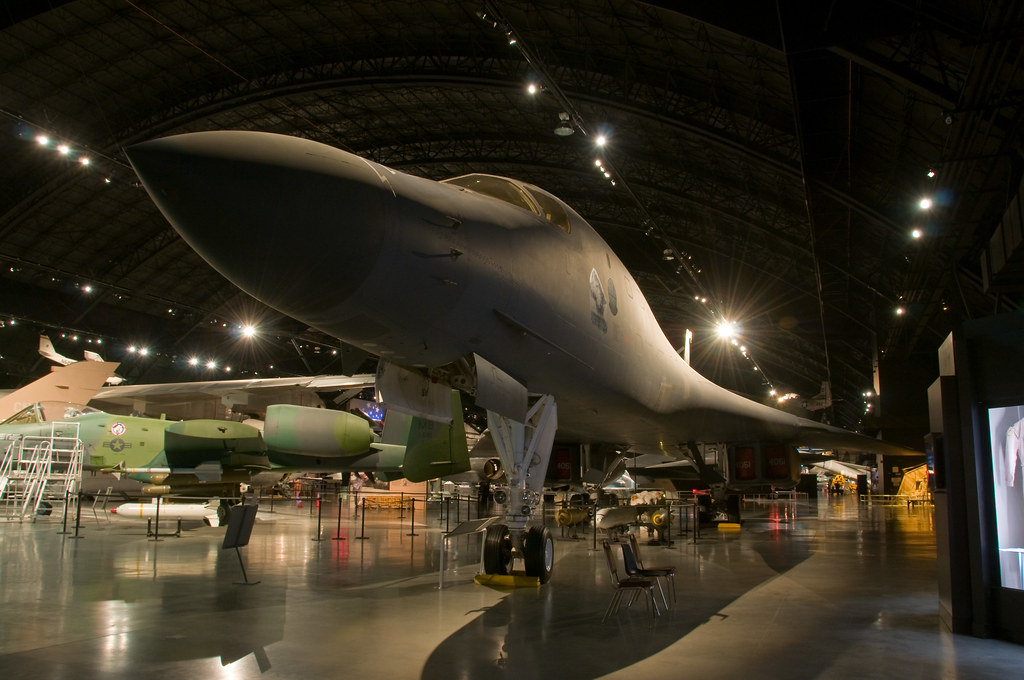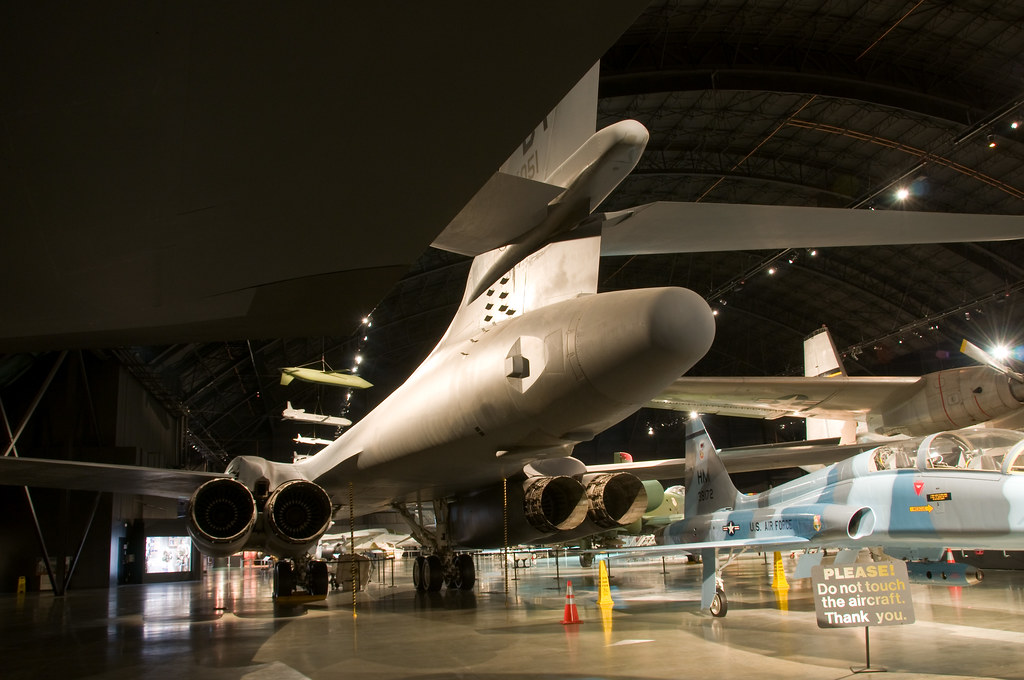

Rockwell B-1B Lancer
Although officially named the "Lancer", B-1 crews almost never refer to the aircraft by this name. Crews prefer to call the B-1 the "Bone". Origins of the "Bone" nickname are disputed, but appear to stem from an early newspaper article about the aircraft wherein its name was phonetically spelled out as "B-ONE" and inadvertently omitted the hyphen. Crews, who generally felt the "Lancer" moniker was unappealing, quickly latched onto the "Bone" nickname.
Operationally, the B-1 was first used in combat in support of operations against Iraq during Operation Desert Fox in December 1998, employing unguided general purpose weapons. B-1s have been subsequently used in Operation Allied Force (Kosovo) and most notably in Operation Enduring Freedom in Afghanistan and the 2003 invasion of Iraq. In both conflicts, the B-1 employed its full array of conventional weapons. The B-1 now fills an important niche in the Air Force inventory. The project finished on budget, and the B-1 has higher survivability and speed when compared to the older B-52, which it was intended to replace. With the arrival of limited numbers of B-2s in the 1990s and the continuing use of B-52s, its value has been questioned. However, the capability of a high-speed strike with a large bomb payload for time-sensitive operations is useful, and no new strategic bomber is on the immediate horizon.

No comments:
Post a Comment